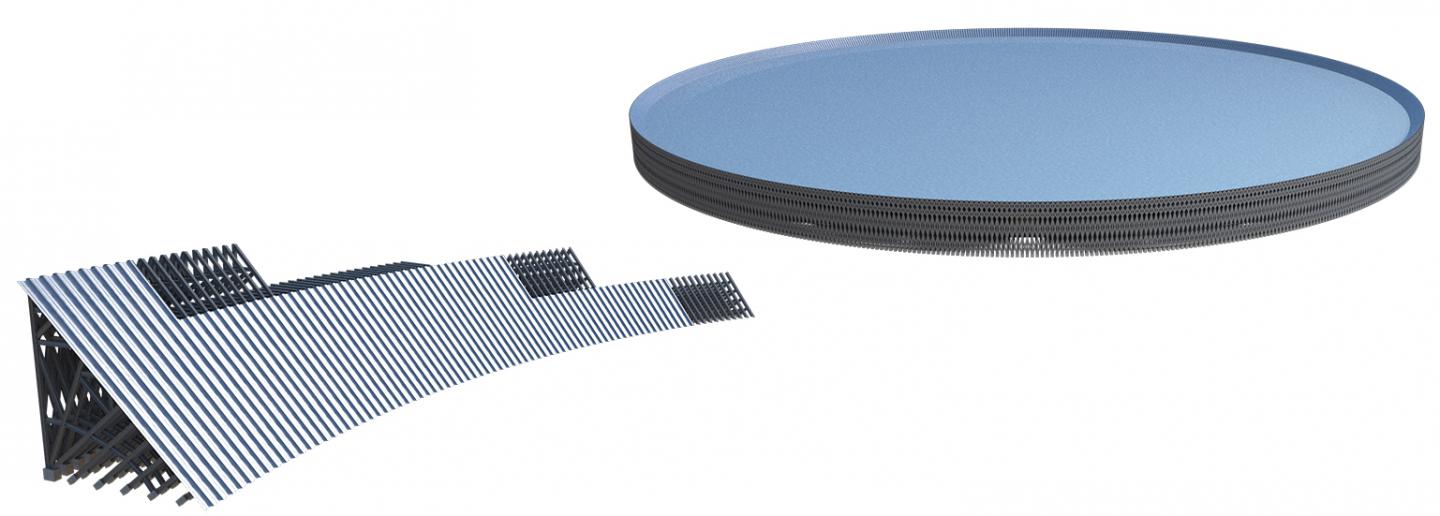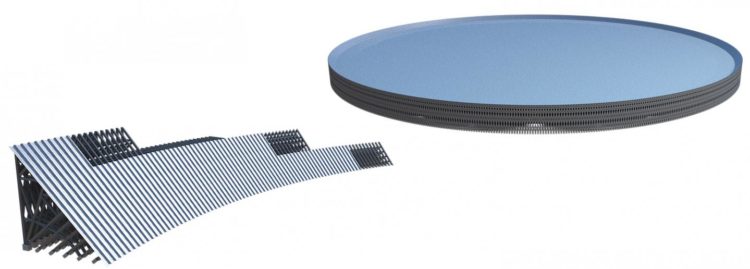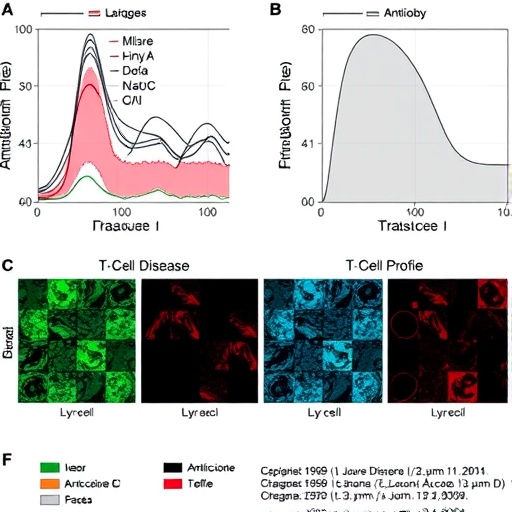Approach aims to lower costs, construction time for building pumped storage reservoir dams

Credit: Southwest Research Institute
SAN ANTONIO — Oct. 22, 2019 — The FAST Commissioning for Pumped Storage Hydropower (PSH) prize competition selected a Southwest Research Institute PSH concept among its four grand prize winners.
The FAST prize — which stands for “Furthering Advancements to Shorten Time” Commissioning for PSH — aims to reduce commissioning times of PSH projects by half, while reducing both cost and risk. The National Renewable Energy Laboratory (NREL) administers and executes these prizes on behalf of the U.S. Department of Energy’s Water Power Technologies Office.
Electric power systems use PSH for load balancing. The method uses the gravitational potential energy of water, pumped from a lower-elevation to a higher-elevation reservoir using low-cost, off-peak surplus electric power to run the pumps. During periods of high electrical demand, the stored water is returned to the lower reservoir, driving turbines to produce electric power. Although the losses from the pumping process mean it consumes more energy than it generates, the system creates value by providing more electricity during periods of peak demand, when electricity prices are highest.
Selected from a field of 22 finalists, two SwRI concepts were among nine that moved on to the “incubation stage” of the competition. Following pitch presentations on October 8, SwRI was named one of the grand prize winners for its concept to lower the costs and construction time for building PSH reservoir dams.
“Our concept explores how to adapt a successful, but little-known 19th century steel dam construction technique to accelerate PSH development in the 21st century,” said Dr. Gordon Wittmeyer, a hydrologist in SwRI’s Chemistry and Chemical Engineering Division and the Institute lead for PSH. He is working with Dr. Biswajit Dasgupta, an SwRI structural engineer with significant experience in the hydropower industry, to develop a modular design concept for structural steel dams. The technique could cut dam construction costs by one-third and reduce construction schedules by half.
“It’s significant that the two SwRI concepts were both selected to move forward to the incubator stage of the competition,” said Eric Thompson, a program manager in SwRI’s Mechanical Engineering Division. He worked with SwRI’s Kevin Supak on the other concept. They analyzed the potential of using an array of shallow, interconnected reservoirs combined with packaged turbine units to reduce the PSH construction schedule, with the goal of bringing electric power to the grid sooner and improving the project return on investment and net value.
###
See a video overview of the project here: https:/
For more information, visit https:/
Media Contact
Deb Schmid
[email protected]
210-522-2254
Original Source
https:/





